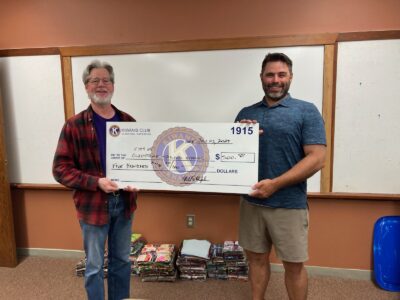Caspian, Michigan: A place frozen in time

Dan Paul
The intent of this article is to spur memories of living in small towns and communities in Michigan and Northern Wisconsin.
The lonesome wail of the passing train ignited my memories of days past. For many of us in Upper Michigan and Northern Wisconsin, life revolved around the web of railroad tracks that traversed the countryside. Nestled along these rails were villages, towns, and cities. Throughout these localities was a diverse mix of businesses, ranging from diners, bars, clothing/apparel stores, and various organizations.
A few businesses and organizations are reminiscent of growing up in Caspian in the 1950s and 1960s. One such business in particular was the Cozee Bar, located on Main Street. Today, stepping inside is like taking a step back in time. The décor and bar are only slightly unchanged. Years ago, I remember stopping by the bar at Halloween for trick-or-treating, and the patrons would generously contribute candy to my bag. Hector Marinello, who was the owner, when in a festive mood would break out his concertina and occasionally accompanied by Saxophone Sam, begin to play a mixture of songs. Both of them performing together would add to its ambiance. The family tradition is continued by Hector’s daughter, Tammi Marinello, who is the current owner.
Another establishment was Bing’s End Zone Bar. Situated in the bar was the large picture window facing Main Street. Etched on it was a painted end zone of a football field with all its trappings. I remember that my dad, Arnold Paul, would deliver Paul’s Pop to the bar, and I would often tag along. Behind the bar was the owner, Bing. He would stand there with his thick eyeglasses on and the same seldom-changing, stoic expression painted on his face. However, this all changed when he would give me a treat. Then, his face would light up.
Also on Caspian’s Main Street was another business we called, “The Greasy Spoon.” This cafe was located across from the State Theater. It was a hangout for the older local youth. Sometimes, they would congregate outside of the building, engaged in seemingly deep conversation, while at other times would go inside and order food. At this cafe, if memory serves, they featured hamburgers and chili. I remember enjoying their hamburgers in particular. (It was a rare treat for us to eat outside of our home.) But what really intrigued me was the pinball machine. I recall the sounds and lights emitting from it, which would reverberate throughout the restaurant. If I had some extra coins, I would spend some time at the pinball machine. No matter how many coins I would feed it, I never seemed to win.
The Duke of Abruzzi Society building (which is still standing to this day) was also located in Caspian. In its heyday, it was an integral part of the Italian community of Caspian, holding various events such as dinners, dancing, and meetings. Another important aspect of gathering was located in its basement where they gathered to make wine with presses and other equipment. On the building’s grounds were the bocce courts. Here, during late spring through September, they would gather and play. An observer would note at times hearing sometimes slurred and frustrated colorful metaphors in both English and Italian echoing throughout the local streets.
Accompanying this were the gestures that they would use when either elated or frustrated. The flailing, erratic motions of their arms and bodies reminded me of an energetic conductor on fast-forward at a symphony. Also, some of the gestures I could interpret, but they shall remain silent as to what they implied or meant. By the way, bocce is still being played there today (but with the new rules of 1990, the colorful metaphors have been eliminated).
Today, most of the buildings and people exist only in faded photographs and memories. Looking back, they have in one way or another impacted the lives of others. Like the web of railroad tracks binding communities to one another, so these businesses and societies bonded people together.
In closing, I would like to take the time to thank Art Aregoni of Caspian for his various recollections, which greatly contributed to the writing of this article. I would also like to dedicate this article to my fellow West Iron County High School Class of 1970 classmates.




